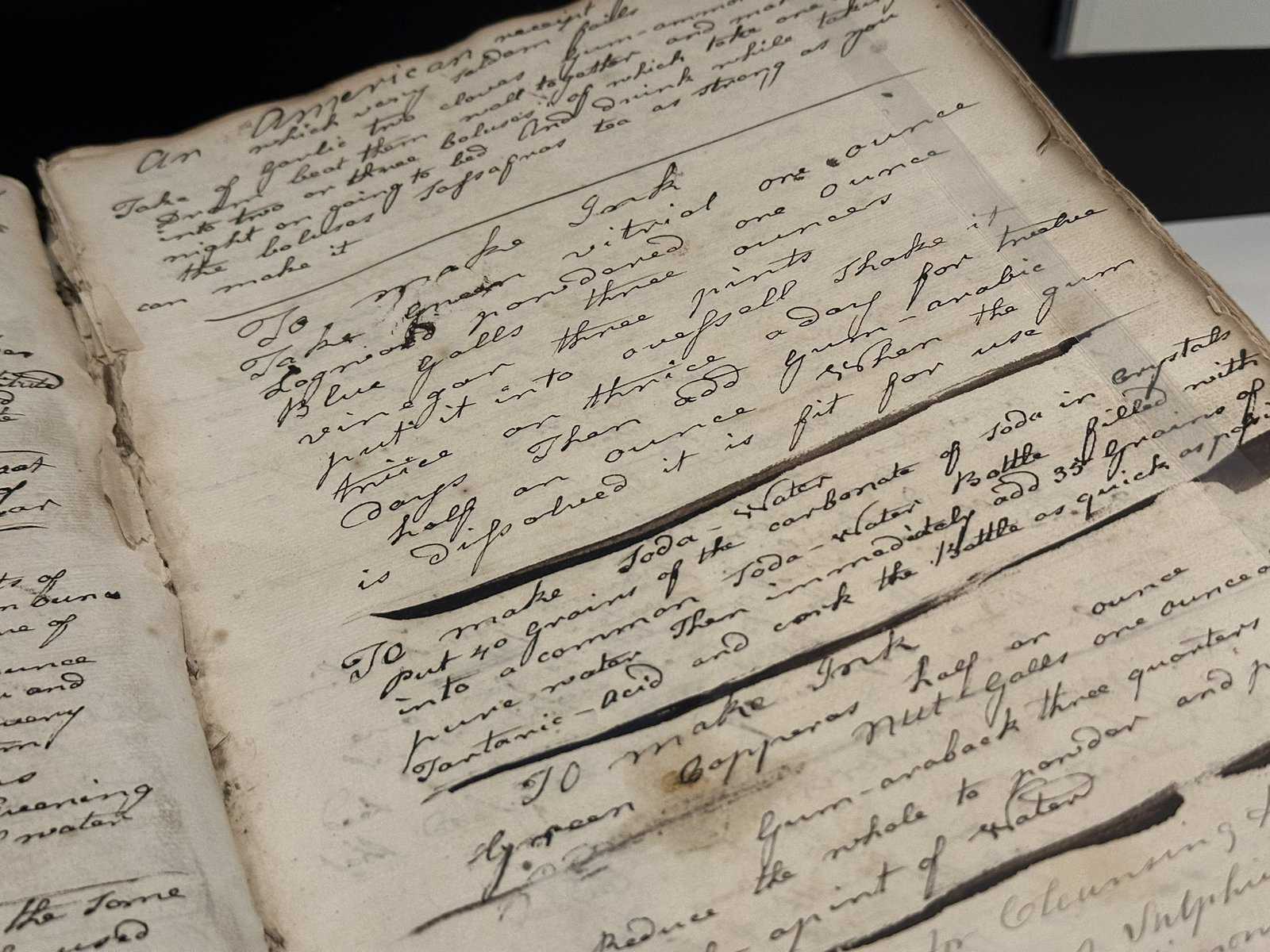
Medical and Cookery Receipt Book. England, 1780-1820. Szathmary Culinary Manuscripts [En36 msc0533]. Special Collections & Archives, University of Iowa Libraries.
From co-curator Eric Ensley:
Ink can be made from many materials. The earliest black inks were made by catching carbon soot from candles and binding it to tree gum. In the Middle Ages (ca. 500-1500), many inks were made with oak galls, the round growths that develop on oak trees when wasps lay their eggs in them. Pulverized into a powder, this was mixed over heat with wine or vinegar and combined with tree gum. Later, with the advent of the printing press in Europe in the 15th century, printers adapted inks to the press by adding oil to the mixture, which helped it better adhere to paper.
Inks were not widely available for purchase until after the industrial revolution at the beginning of the 19th century. Recipes had to be passed from person to person, as with this recipe for ink found in a household book of recipes from the 18th century. Likewise, handwriting has always been a craft that had to be taught. Scribes in the Middle Ages (ca. 500-1500) and Early Modern period (ca. 1500-1800) would be taught to write in a variety of scripts that could convey different levels of formality or mood.
Transcript for the primary ink recipe shown:
To make Ink
Take green vitriol one ounce
Logwood powdered one ounce
Blue galls three ounces
Vinegar three pints
Put it into a vessall Shake it
twice or thrice a day for twelve
days Then add gum arabic
half an ounce When the gum
is dissolved it is fit for use
Transcript for soda water recipe:
To make Soda-Water
put 40 grains of the carbonate of soda in crystals
into a common Soda-Water Bottle filled with
pure water Then immediately add 35 grains of
Tantanic [sic] acid and corn the Bottle as quick as possible
